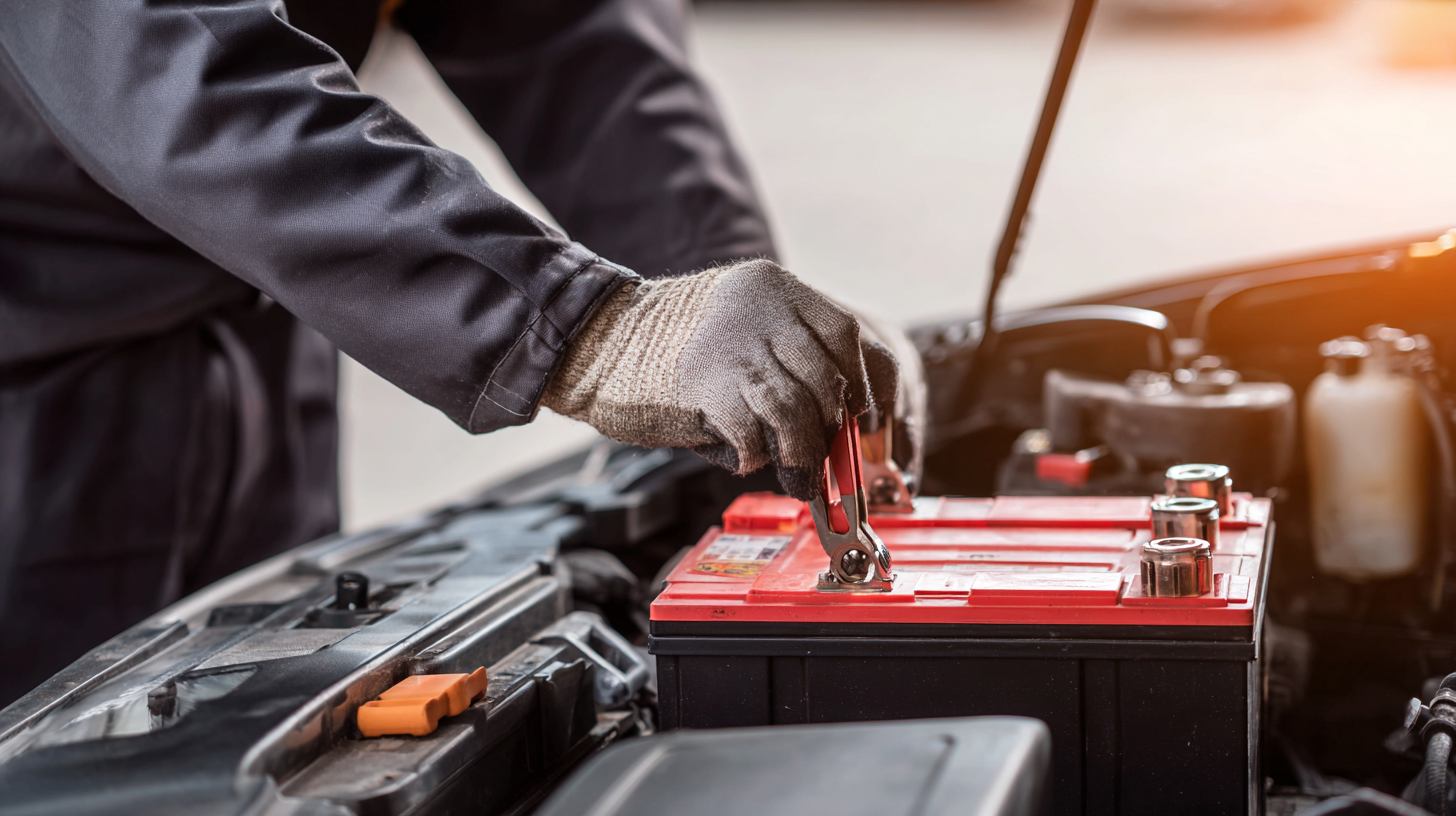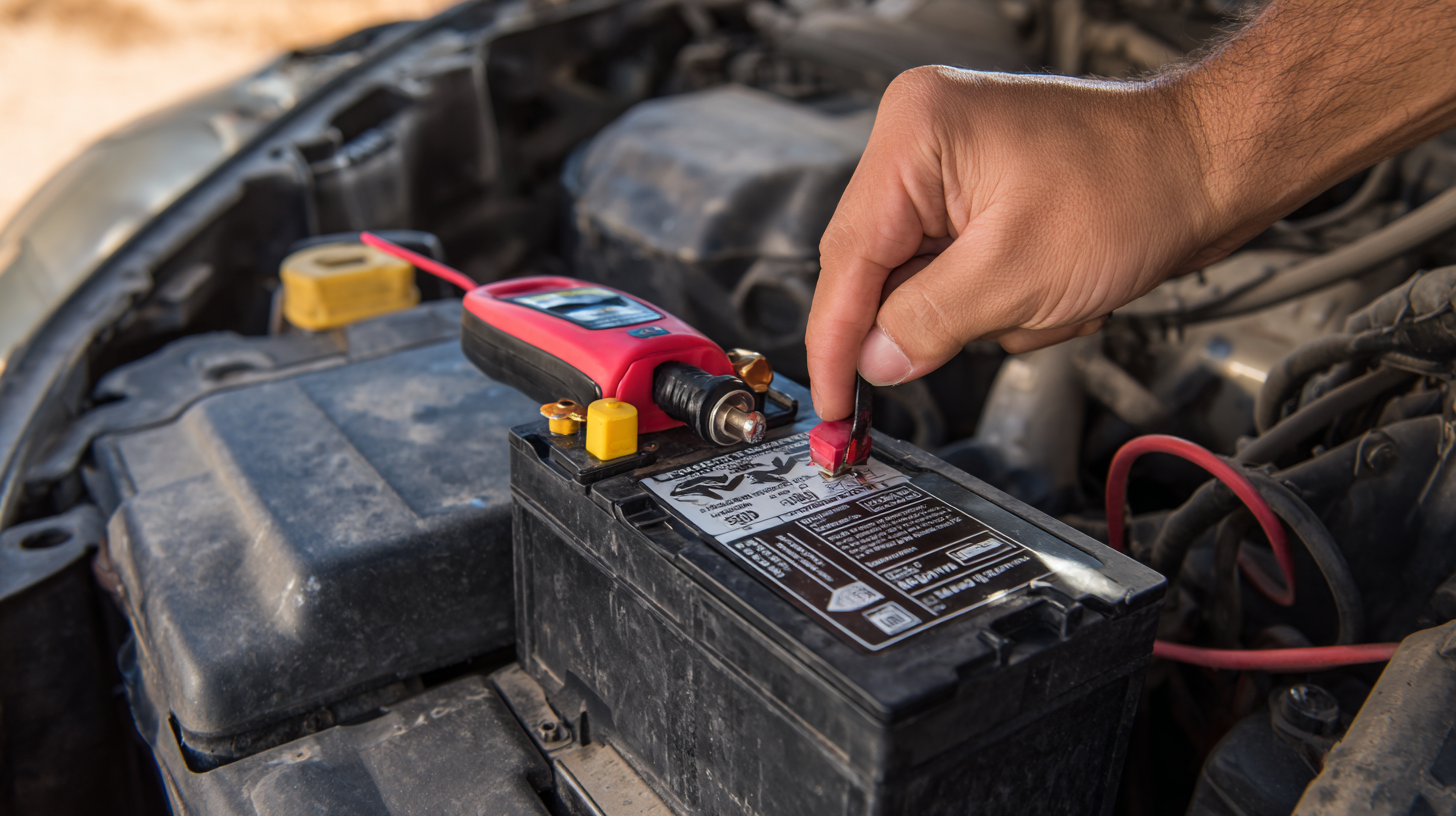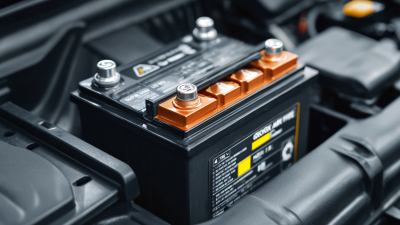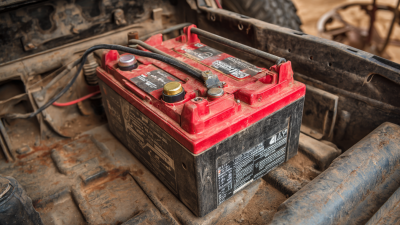When it comes to vehicle maintenance, one of the most important skills every driver should possess is knowing how to safely replace a dead car battery. According to automotive expert John Smith, "Understanding the process of replacing a car battery can save you time and money while ensuring your vehicle runs efficiently." With the right knowledge and tools, replacing a dead battery can be a straightforward procedure.
In this ultimate guide, we will explore the essential tips and tricks you need to safely replace your dead car battery. From selecting the right battery for your specific vehicle to mastering the step-by-step replacement process, we cover all the crucial aspects to empower you as a driver. With insights from leading experts in the field, you will gain confidence in tackling this vital maintenance task.

Whether you’re a seasoned car owner or a new driver, learning how to replace a dead car battery is an invaluable skill that can help you in unexpected situations.
Join us as we delve into the top five tips that will make your battery replacement experience seamless and stress-free.
When it comes to understanding battery lifespan, knowing the average car battery life and indicators of failure can save you from unexpected breakdowns. Most car batteries last between three to five years, but factors like extreme weather, driving habits, and maintenance practices can significantly influence their lifetimes. Regularly checking your battery's age and condition can help you gauge when it's time for a replacement.
One key indicator of battery failure is sluggish engine starting; if you notice a delay when turning the ignition, it might be time to investigate further. Additionally, look out for corrosion around the battery terminals, which can hinder performance. If your battery warning light illuminates on the dashboard, don't ignore it—this could signal an urgent need to replace or recharge your battery.
Tips for maintaining your battery’s health include keeping the battery clean and tight, ensuring good connections at the terminals, and performing regular voltage checks. Parking your vehicle in a garage can also help protect the battery from extreme temperatures, thus extending its life. By staying vigilant about your battery’s health, you can avoid the hassle of a dead battery when you least expect it.
When it comes to car maintenance, recognizing the signs of a dead battery can save you time and trouble. Here are the top five indicators that your car battery may be on its last legs.
First, if you notice your headlights dimming while the engine is running, it suggests that the battery isn't holding a charge effectively. Second, difficulty starting your engine, such as cranking sounds or prolonged ignition attempts, is a clear signal to check your battery's health.
Additionally, look out for corrosion around battery terminals. This flaky substance can lead to connections that are less reliable, impacting your vehicle's performance. If you experience electrical issues like malfunctioning lights or power accessories, this may also point to battery failure. Lastly, if your battery is more than three years old, it’s wise to have it tested regularly, as aging batteries are more prone to dying unexpectedly.
For those who suspect battery trouble, here are some tips to address the situation proactively. Regularly clean the battery terminals to prevent corrosion buildup, and perform routine checks on your battery’s voltage with a multimeter. Always keep jumper cables in your car for emergencies, and consider investing in a portable jump starter for added convenience. By staying vigilant about these signs and adopting preventive measures, you can ensure your vehicle remains reliable on the road.
When it comes to choosing the right replacement battery for your vehicle, understanding the crucial aspects of capacity, size, and compatibility is paramount for optimal performance. According to the Battery Council International, a vehicle’s battery capacity is measured in ampere-hours (Ah), which reflects how much energy it can store. For most standard vehicles, a battery with a capacity of 60-100 Ah is common, but high-performance or luxury vehicles may require higher ratings. Always refer to your owner’s manual to determine the specific requirements for your car.

Size is another critical factor in selecting a replacement battery. The American National Standards Institute (ANSI) provides a classification system based on dimensions, which means you need to choose a battery that fits snugly in your car’s battery compartment. An ill-fitting battery can lead to improper connection, limiting performance and potentially causing damage. Additionally, compatibility with the vehicle's electrical system is essential. Automotive batteries generally fall into categories like lead-acid or AGM; using a battery that aligns with your vehicle's requirements will ensure reliable starts and longevity. Utilizing resources such as the Electric Power Research Institute can help guide your selection process by providing reliable data on battery types and their specific applications.
When handling and installing a car battery, safety should always be your top priority. Begin by wearing personal protective equipment, such as gloves and safety goggles, to shield yourself from acid spills and any potential sparks. Working in a well-ventilated area is crucial, as batteries may emit hydrogen gas, which is highly flammable. Ensure that you keep any open flames or smoking materials at a safe distance to prevent accidents.

Before disconnecting the battery, it’s vital to turn off your vehicle and remove the key from the ignition. Start by disconnecting the negative terminal first to mitigate the risk of short-circuiting. When installing a new battery, carefully align the terminals and ensure a secure fit.
Double-check that the battery is properly secured in its compartment to prevent movement during driving. Finally, after installation, always test your connections and ensure that everything is functioning correctly before hitting the road. Following these best practices will help you safely manage a car battery replacement while minimizing risks to yourself and your vehicle.
Replacing a car battery may seem daunting, but with the right tools and techniques, you can handle it safely and efficiently. To begin, ensure you have essential tools at hand: a socket wrench, safety gloves, and eye protection. According to a report by the Battery Council International, approximately 25% of car battery replacements are performed by vehicle owners themselves, highlighting the importance of knowing how to do it properly.
Before you start, it's crucial to understand the correct sequence for battery replacement. First, disconnect the negative terminal to prevent electrical shorts. Then, remove the positive terminal and gently lift the battery out of its tray. Using a battery lift or a friend can make this process easier. A survey by AAA found that mishandling battery terminals is a common mistake, which can lead to injury or damage.
Tip: Always check the battery’s warranty and specifications before purchasing a new one. Using the wrong size or type can lead to performance issues down the line. Moreover, before installation, clean the battery tray and terminals with a mixture of baking soda and water to ensure a solid connection for the new battery. These simple steps can significantly enhance the longevity and reliability of your new battery.




